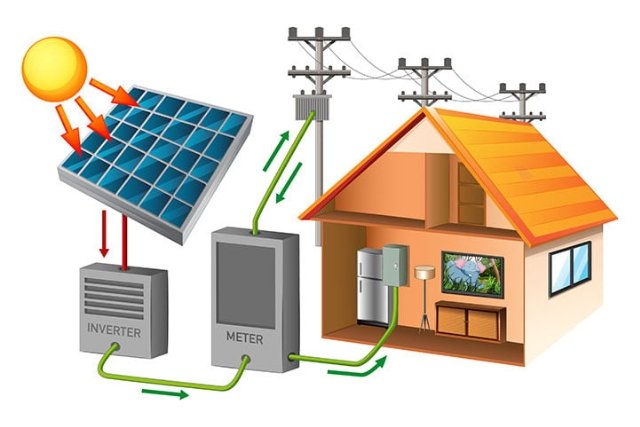Hybrid Solar System
Similar to a traditional solar panel system that is connected to the grid, a hybrid solar panel still uses photovoltaic (PV) materials to collect and convert sunlight into energy. In a traditional system, that electricity is routed to the grid, which allows the homeowner to go without a battery while still being able to access electricity during overcast days or the night.
With a hybrid solar system, however, the electricity is routed to a hybrid inverter and battery. Once the battery is full, the excess is channeled through a smart meter to the grid’s power lines. This allows the homeowner to retain a portion of the electricity, which can help power the home not only during overcast days or the night but also if there is an energy blackout.

Hybrid solar systems that store energy in a battery while remaining tied to the grid should not be confused with systems that use both solar and wind energy, which are often also referred to as hybrid systems.
Solutions Offered: – Solutions customized to suite site conditions from inverter capacities ranging from 1KW to 5KW on single phase and three phase system upwards 6KW to 50KW.

What is a hybrid solar system?
A solar power system that combines solar panels, a hybrid inverter, and a battery bank is known as a hybrid solar system. The batteries store energy for later use as the solar panels transform sunshine into electricity.
With the ability to operate both on and off the grid, hybrid systems let you continue using solar electricity even when the grid is down.
How does a hybrid solar system work?
A solar hybrid system is a renewable energy system that produces clean energy for your home using solar photovoltaic (PV) panels. A hybrid solar system intelligently alternates between drawing power from the grid, batteries, and the sun. You can avoid using grid power during peak hours, saving money on your bills.
The system stores the renewable energy generated by its solar panels on the roof. The system automatically switches on and powers all of your home’s critical loads during a storm or power loss, maintaining the operation of your refrigerator, lights, and phones and iPads.

